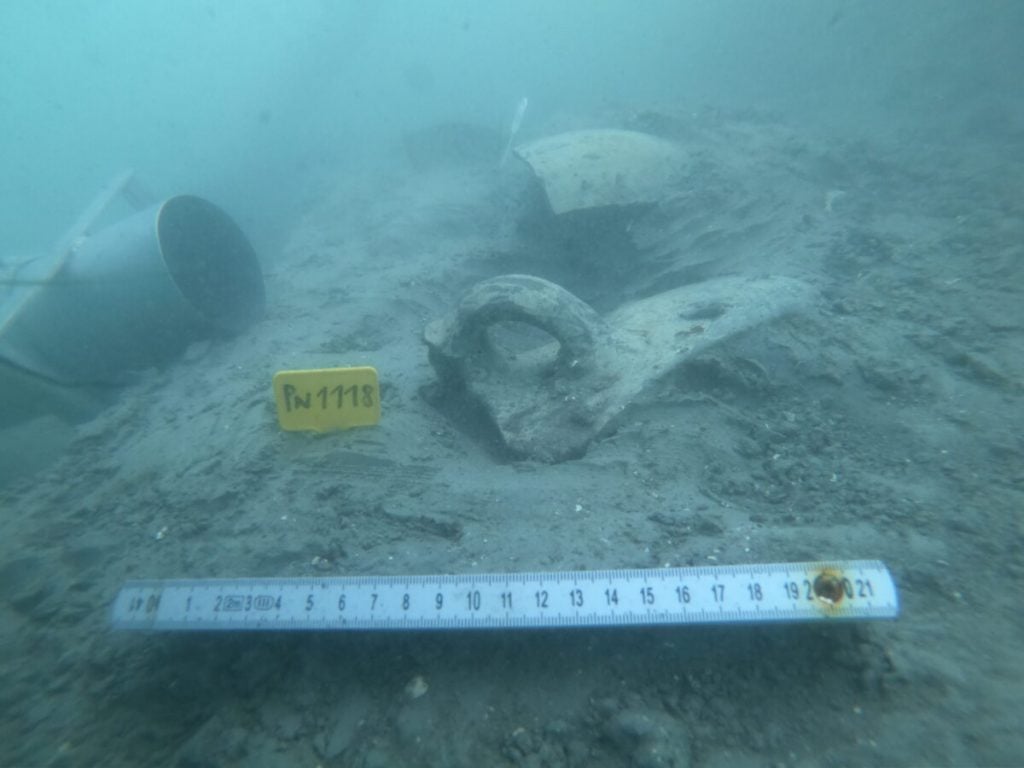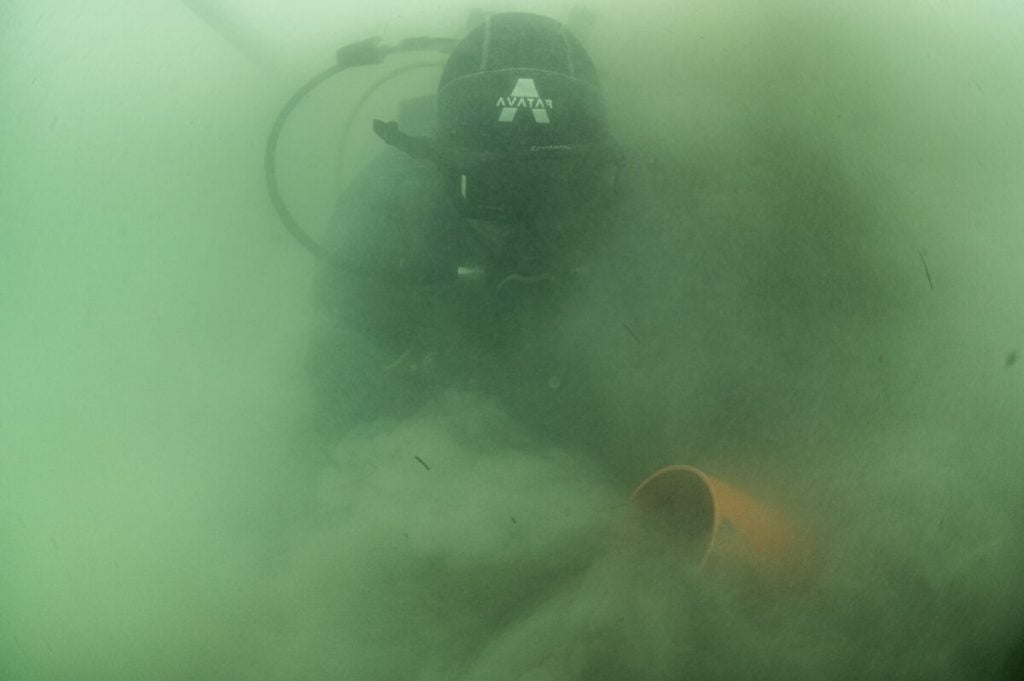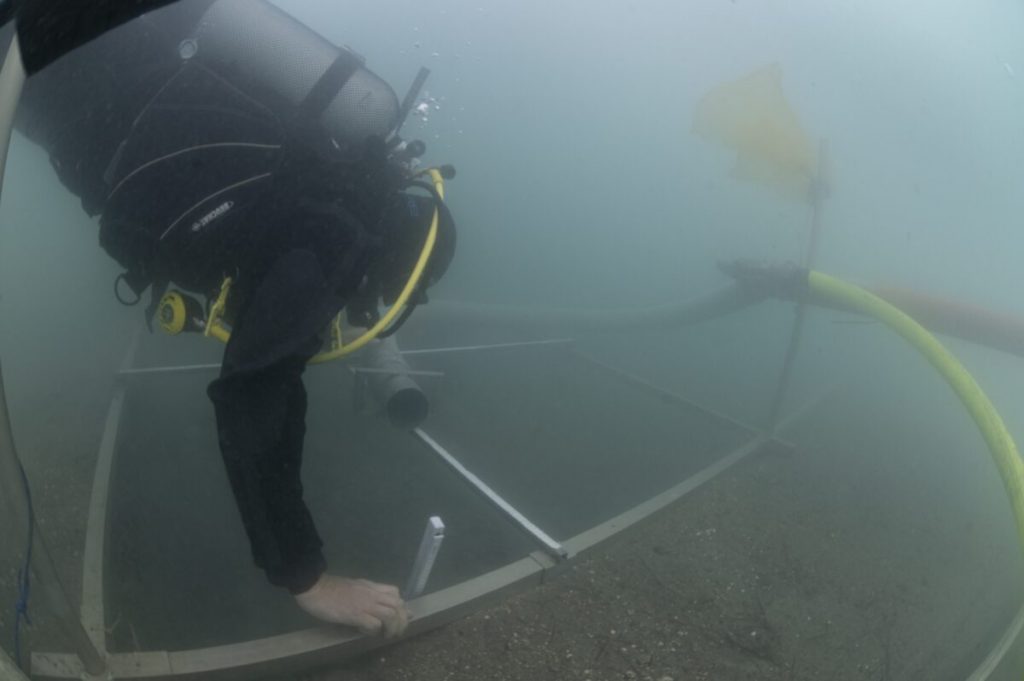Archaeology & History
The Remains of an Ancient Roman Harbor Turn Up in Slovenian Waters
Divers found remnants of ships, stakes, and more than 3,000 ceramic fragments.

A research team from the University of Ljubljana’s Institute of Underwater Archaeology (ZAPA) have discovered the remains of a Roman harbor off the Portorož coast in Slovenia.
Divers from the university’s Faculty of Maritime Studies and Transport found more than 3,000 ceramic fragments at the site as well as remnants of two ancient ship masts and several wooden stakes and parts of rigging and sails.
The majority of pottery shards “are imported late antiquity pottery: amphorae, kitchenware, and fine tableware,” according to a ZAPA spokesperson. Sigallata, one of the main types of pottery found at the site, was a popular mass-produced type of red pottery made around 1st century C.E., often featuring raised decorative details and friezes.

©2024 ZAPA, Zavod za Podvodno Arheologijo.
The wooden stakes may have once formed a breakwater—a barrier built out at sea to protect the coastline—or pier. The two masts, both over a meter in length, were made from fir and spruce, and are considered extremely rare, with researchers calling them “unique examples on a global scale.” The wooden artifacts will be preserved with melamine resin and stored with the rest of the finds at the Sergei Mašera Maritime Museum in Piran, the neighboring town to Portorož.
The resort town takes its name from the Italian “portorose,” meaning port of roses. It was first inhabited in prehistoric times, and Celtic tribes living there were first conquered by the Roman Empire in 178 B.C.E. The town is now a major tourist hotspot, and Benardin Beach—where the artifacts were found—is a well-sheltered area, which would have contributed to the preservation of the ancient relics found there by researchers over the last decade.

©2024 ZAPA, Zavod za Podvodno Arheologijo.
According to Slovenia’s national tourist board, the country has one of Europe’s longest traditions of underwater exploration, and the country’s waterways and coasts have been excavated for 140 years. These finds are part of a campaign across Slovenia’s 30-miles of Adriatic Sea coastline since 2017, with the final phases of field research taking place in November 2023 and February 2024. The work was carried out in “consistently poor visibility,” according to ZAPA, which made the study less straightforward.
Two other Roman sites have been found in the region since 1998, including an ancient farm settlement found underneath a current gas station. The second, found in 2004, was an ancient fish farm discovered next to old salt warehouses on the coastline.
The discoveries suggest that there would have been a small Roman harbor with a mooring near Portorož’s Bernardin Beach, dating between the 3rd and 4th centuries C.E. Slovenia was part of the Roman Empire for around 1,000 years from the end of the 2nd century B.C.E. As reported on the ZAPA website, the findings “suggest that in late antiquity, there was a small harbor with mooring and wooden structures – either a breakwater or communication with the shore.” A post-fieldwork phase of research will continue to examine the site.





